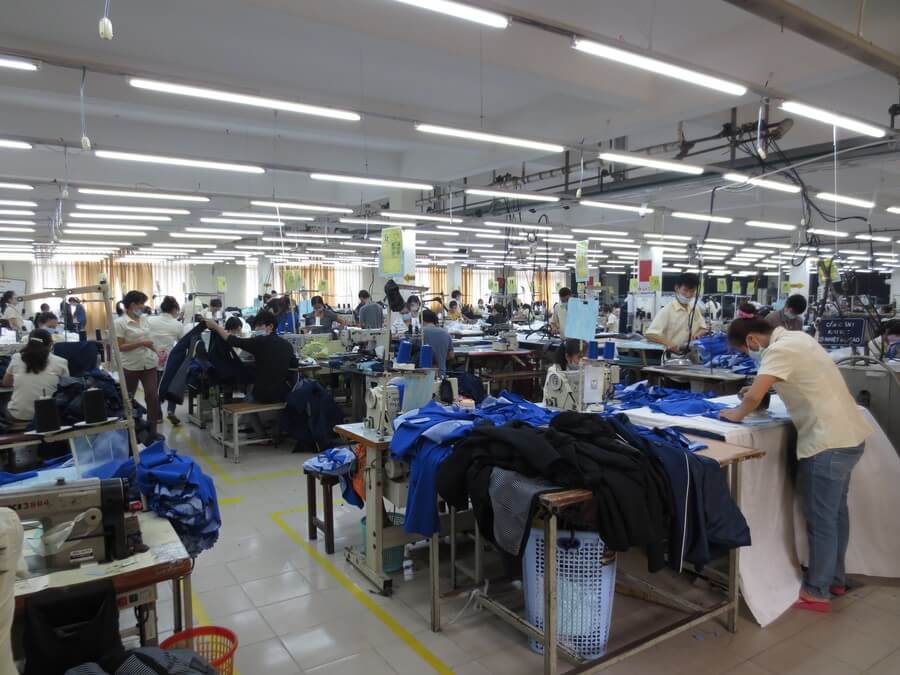
In my personal experience, having been in this business for nearly three decades, I have seen the best and the worst sides of the fashion industry. From the designer’s perspective, there are a small number of insecure designers in North America who go around and backstab their rivals and competitors. This is a common practice to get ahead in North America. Yes, there are some petty designers who just want to stomp over everyone to get their brand recognition. Luckily, only a very small fraction of the individuals in the fashion business conduct themselves in this manner, in comparison to the whole garment industry. There are a lot more passionate and kind factory garment workers than there are cold-blooded, snobbish designers in the world.
Generally speaking, when dealing with garment manufacturing workers, I find 99% of the work force is quite helpful, cooperative and hard-working. Poverty is one of the biggest problems in most Asian countries. In every factory I have visited in each country, no matter how small or how big the size, garment factory workers always greeted me with a big smile on their faces and displayed great pride in their work. Even though wages are low and everyone is underpaid, garment factory workers are content and courteous because they truly appreciate one of the simple things in life, which is a job to support their family. During my visits, the owners/sales representatives told me that their employees have a choice to work or not to work. I believe that it is up to each individual to shape their own future and choose their own righteous path. Sadly, most people in third world countries have very few options, when it comes to employment opportunities, because there is so much corruption within all levels of government and organizations. I have spoken with many of the locals and workers, and they have told me that government officials often steal taxpayers’ money to send their families abroad for a better life. As a result of this daily corruption, the government has no funds to create or support programs for education, post-secondary training, scholarships, welfare, and Medicare. The average poor and less fortunate person in Asia, with no or low education, quite often has only three options to choose from: (1) work in a factory, (2) become a prostitute, or (3) become a homeless person. Therefore, a lot of low-paid garment workers are quite humble and feel appreciative of what they have to offer to their employer, which are their fashion trade skills. On several occasions during my visits, I was lucky enough to have a few sewing machine operators show me some of their sewing tricks right on the spot. In two words, my whole experience with these garment factory workers was amazing and inspirational. Without these low-paid, hard-working citizens, we would not have a fashion industry or designers.
Despite the misconception that the fashion industry is a cut-throat business, in my opinion, it is not true. There are a lot of great people in the fashion industry, who invest their entire heart and soul in the business. I believe that there are only a few bad apples in North America, Europe and Hollywood, who have created this negative perception for the industry. Throughout history, Asian workers have proven themselves to be resilient people, even in times of hardship and extreme poverty. They co-exist amicably because they respect one another through their sheer determination to survive and succeed in their harsh lives. And, through all of their perseverance, they have helped Asia to become the most dominant continent for the garment and fashion accessories producers and exporters in the world. This is part of the reason why most of the jobs in the garment industry are now located in the heart of Asia, instead of North America and Europe. The Asian garment communities have shown us that the real world of fashion has no place left for the ignorant, toxic fashionista who wants to destroy the positive image of the 21st Century apparel industry for their own personal gain.
As Westerners, we must stop bickering among ourselves and start learning from these Asian garment workers, so we can all be more successful, productive and effective in society. How are we not able to accomplish the same feat in North America?
– Chris Falcon is a Canadian designer and fashion educator with over 35 years of experience in the garment design and manufacturing business.